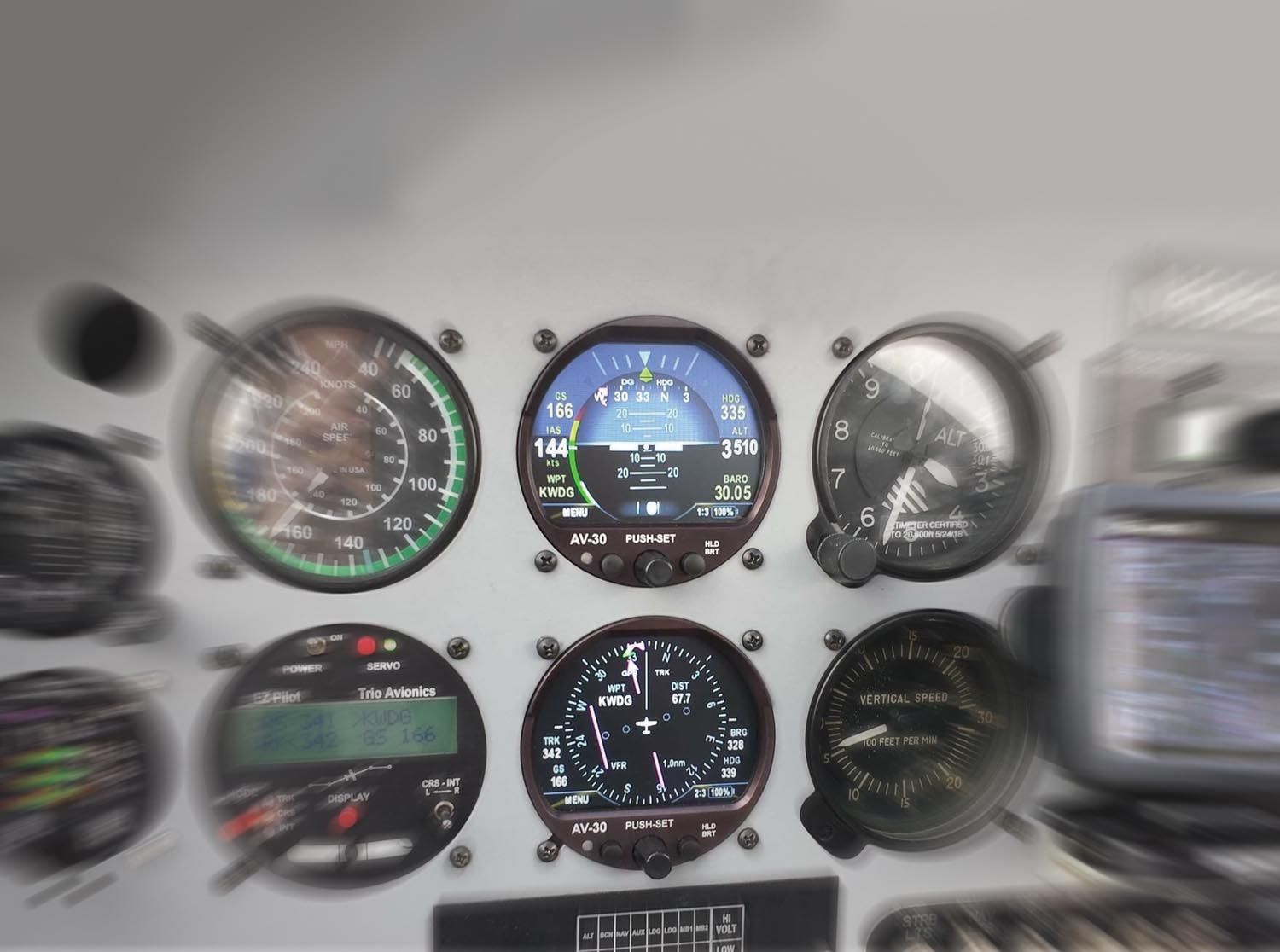 With proof that the retrofit avionics market is more competitive than ever, New Mexico-based startup company AeroVonics brings two new EFIS products to a crowded market less than a year after unveiling them at AirVenture 2018. Both instruments—the AV-30 and smaller AV-20—are a departure from typical modern EFIS displays.
With proof that the retrofit avionics market is more competitive than ever, New Mexico-based startup company AeroVonics brings two new EFIS products to a crowded market less than a year after unveiling them at AirVenture 2018. Both instruments—the AV-30 and smaller AV-20—are a departure from typical modern EFIS displays.
That’s because they’re designed to fit into existing instrument panel round cutouts, which makes them space savers and sidesteps a complicated install. It also makes them an easy way to modernize aging six-pack-equipped panels. Leave your cutting tools in the drawer because you shouldn’t need them. Moreover, the units have an intelligent user interface and generous feature set (including built-in AoA and audio outputs), plus the flagship AV-30 is priced sub-$2000. That’s a sweet spot for both new installations and for existing panels needing a modern refresh. The smaller and entry-level AV-20 is even cheaper at $499.
We recently put the AeroVonics displays across our evaluation bench and prepared this field report.
Full-Sized AV-30
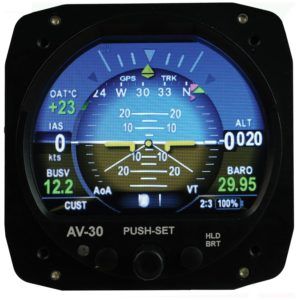
First up is the flagship AV-30-E. The E suffix in the AV-30 means it’s targeted at experimental aircraft because the company is also preparing versions for the certified world. Think of the AV-30 as a primary flight display packed in a familiar 31/8-inch instrument chassis. That means it can slip into the existing cutout of a round-gauge instrument panel. That’s good for buyers who have an existing panel with traditional six-pack instruments, but builders looking for larger screens will look elsewhere. Up front, there’s a lot of data packed into a small area.
For space-challenged panels, we think the AV-30’s traditional instrument bezel works well, especially if upgrading a vacuum-driven attitude gyro is your goal. The instrument’s dimensions are 3.38 by 3.38 by 1.6 inches, and the whole unit weighs .50 pounds. Check that against a typical vac-driven iron gyro. The unit uses a single 15-pin male D-sub connector that’s pretty standard and comes with the install kit, of course.
The AV-30 requires a resettable 2-amp circuit breaker and can operate between 10 and 32 volts. You connect the instrument(s) to the essential or battery master bus and not the avionics bus. But lose bus voltage altogether and the AV-30’s internal battery keeps the data running for as long as two hours.
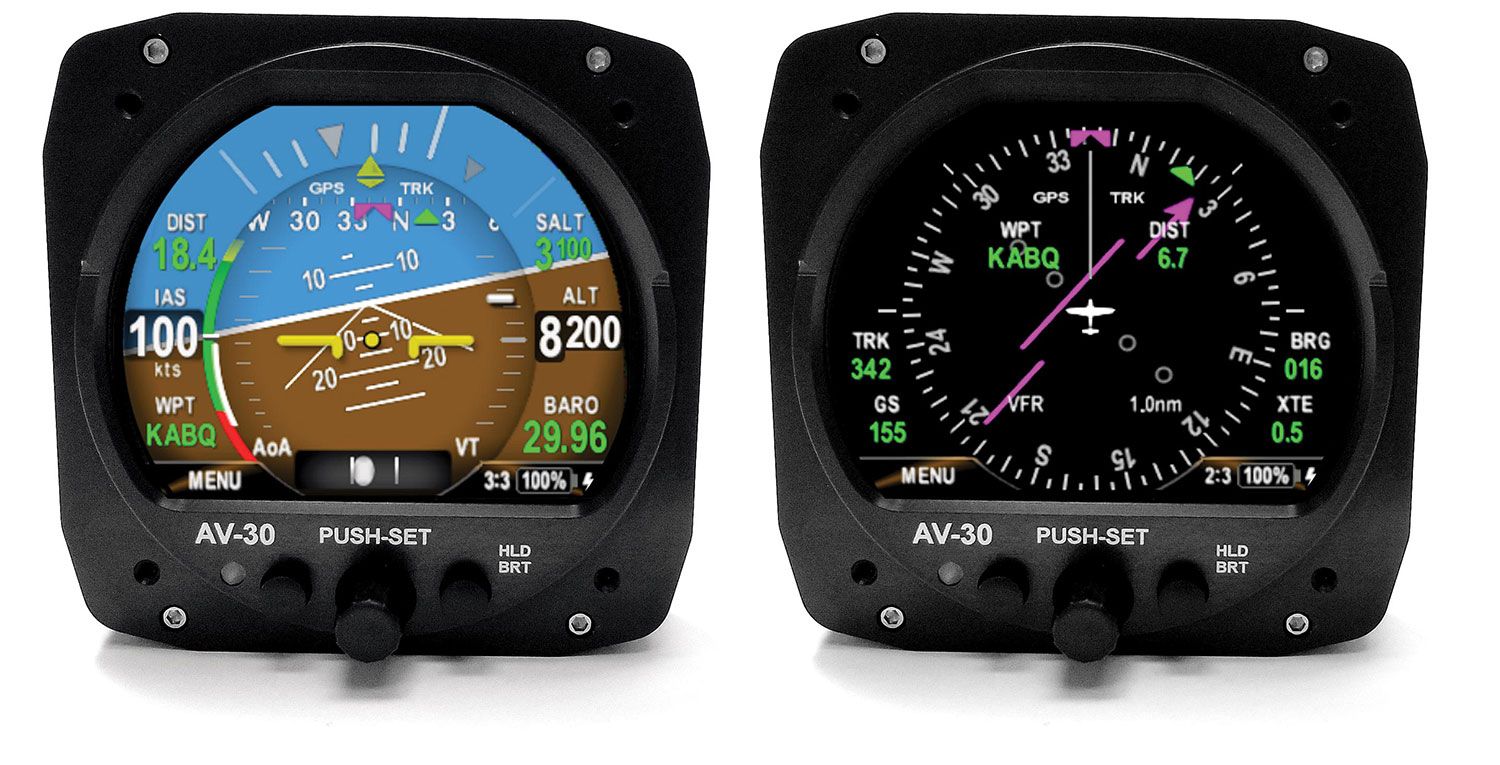
Catering to traditionalists, the AV-30 has a highly customizable attitude indicator display that mimics that of a traditional spinning gyro, but a remarkably crisp screen resolution kicks the gee-whiz factor up several notches. The AV-30 can be field configured as either an attitude indicator or directional gyro indicator and is fully self-contained with dual precision inertial pressure sensors (it requires pitot/static input). What’s pretty trick is the unit can be toggled between an AI and DG display on the fly, or it can be locked for displaying either one.
Although there’s limited screen real estate, the familiar attitude display can be overlaid with data such as indicated airspeed, altitude, baro, AoA, OAT, and GPS track data. That’s a lot of stuff to display on a single round instrument, but AeroVonics pulls it off (barely) thanks to that crisp display. Still, if any of the extra functions proves too much for the data-saturated pilot, the display can be entirely decluttered to show only attitude and slip data. You know, old school, but with digital reliability and weight-savings as a real bonus.
User controls are minimal and limited to a screen brightness button, a mode button that steps you through three separate pages of configurable data, and a set button for affirming data entry. We found the unit to be intuitive to operate without having to dig through the manual—the ultimate test for any modern avionics product.
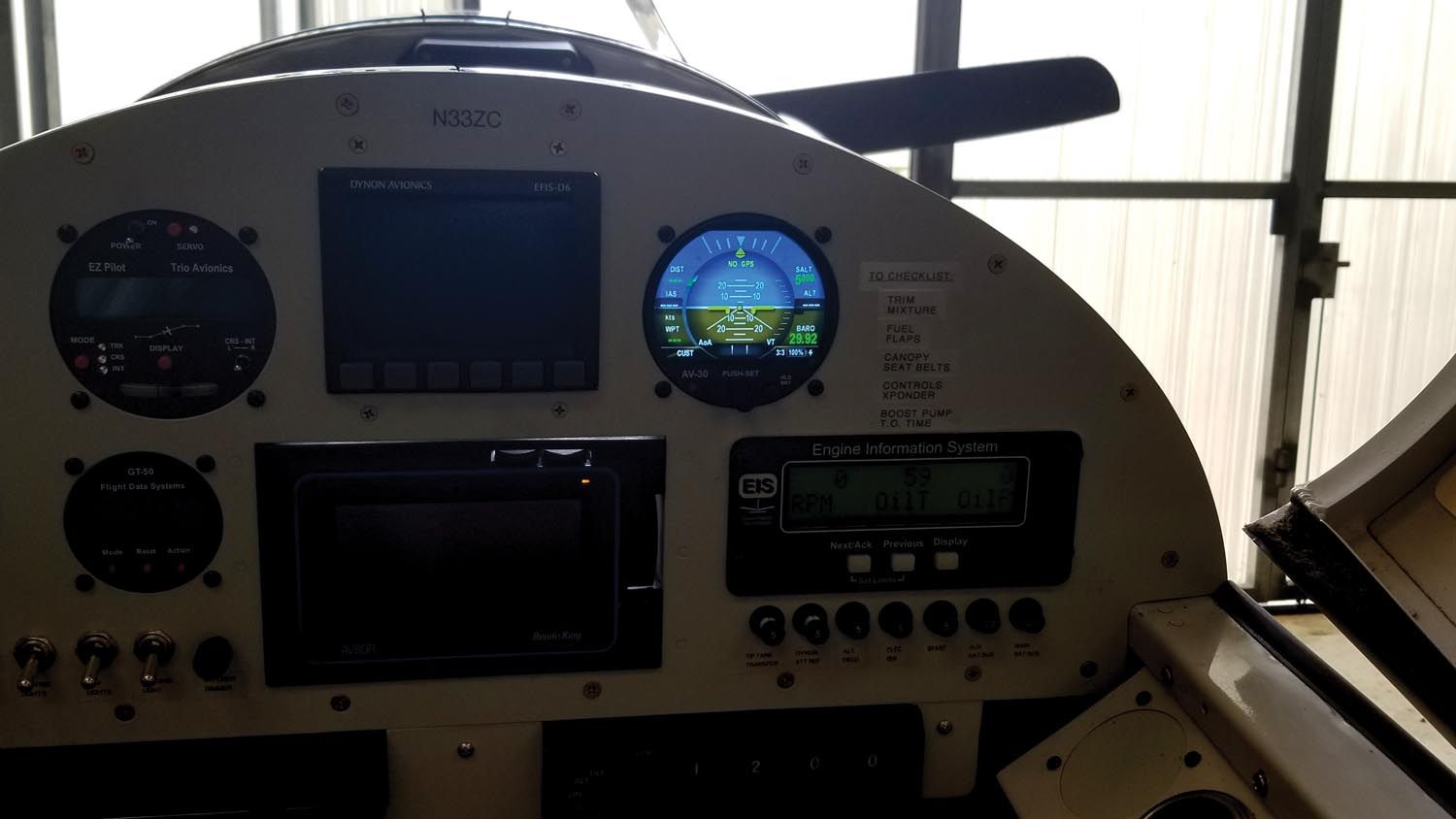
One thing we really like about the AV-30 is its integrated angle of attack (AoA). Similar to what Aspen Avionics does with the integrated (and optional) AoA on its Evolution Pro PFD, AeroVonics derives this data not with a dedicated probe, but in the internal software by comparing airspeed with an accelerometer-derived flight path. Taking it one step further, AoA can be displayed as a hard angle in conjunction with load factor or graphically with a color-coded rising scale. Additionally, the AoA function has audio alerting (by connecting the instrument to an audio panel), and there are also audio alerts for roll and G limits.
Interfacing It
The AV-30 has a digital ARINC 429 bus (there’s also RS232 serial data) for interfacing with external GPS navigators like the Garmin GNS series, while also functioning as an electronic HSI with a familiar magenta course pointer and D-bar. That means with dual AV-30s, one instrument can function as the attitude indicator while the other can be used as a digital HSI, essentially replacing both traditional vacuum-driven flight instruments with more reliable digital units. So long, vacuum pump.
There are data fields for GPS track, ground speed, distance, waypoint, bearing, and cross-track error—essentially a repeater for the external GPS. The more basic RS232 serial data stream can drive some moving map displays. AeroVonics says it is finalizing the GPS/HSI integration and is even evaluating an interface with portable GPS units that use the NMEA protocol. That might be incorporated into a future software release. It’s also looking at GPSS (digital steering) for future functionality with Garmin, Apollo, and some legacy BendixKing GPS units.
By default, the AV-30 can function as a non-slaved DG, which means there is no external GPS antenna required, no magnetometer to mount inside the airframe, and no calibration procedures. The downside to all of that is it operates like a non-slaved DG and requires a heading calibration on each power-up, although the instrument does save the last known heading on power-down. During flight, the instrument typically requires minor corrections to null out 5 degrees (on average) of heading error for every 30 minutes of operation. It’s a simple tweak—verify the right heading, push the knob, turn it to the correct heading, and push again to accept. Think of it in terms of setting a mechanical vacuum-driven DG, but only doing it electronically. And no, don’t throw away your calibrated wet compass.
When the AV-30 is connected to a GPS navigator, the heading function can display as a track mode, and you won’t have to make any corrections as long as you accept that what’s being displayed isn’t magnetic heading, but GPS track. It’s better than nothing, but we’d like to see an option for a remote magnetometer.
For both the experimental and certified markets, the company is working on an interface that can provide input drive for autopilots, which is a huge capability that isn’t easy to engineer. For the task, the company did what Garmin did for its G5 EFIS and designed a smart-box autopilot adapter module (the APA10) that will ultimately work with a variety of legacy flight control systems to provide roll, pitch, heading and course datum to and from the autopilot. We suspect the full-up autopilot interface will first come to the experimental market simply because it won’t require FAA certification.
Clock-Sized AV-20
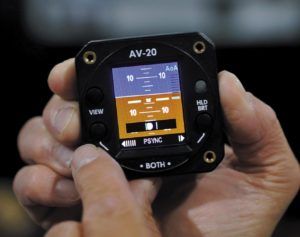
The other unit in the AeroVonics product line is the AV-20 series. It fits into a standard 2.25-inch clock hole. This instrument is available in two versions, the AV-20 at a rock bottom $499, and the AV-20-S at $895.
The difference is the AV-20-S has pitot/static input so it can display real airspeed, not GPS-derived groundspeed. Plus, it also functions as a capable attitude gyro. The entry-level AV-20 lacks the pitot/static plumbing input and has no gyro, but it has multi-level clock and timer functions.
Like the AV-30, the AV-20-S’s gyro function is one of many features in the instrument, including multiple pages for angle-of-attack indication, G-meter, OAT, true airspeed, bus voltage, density altitude, and clock and timer functions. And like the AV-30, some of these functions are paired with audio alerts via a tone or chime. Again, wire it to the switched or unswitched inputs on an audio panel.
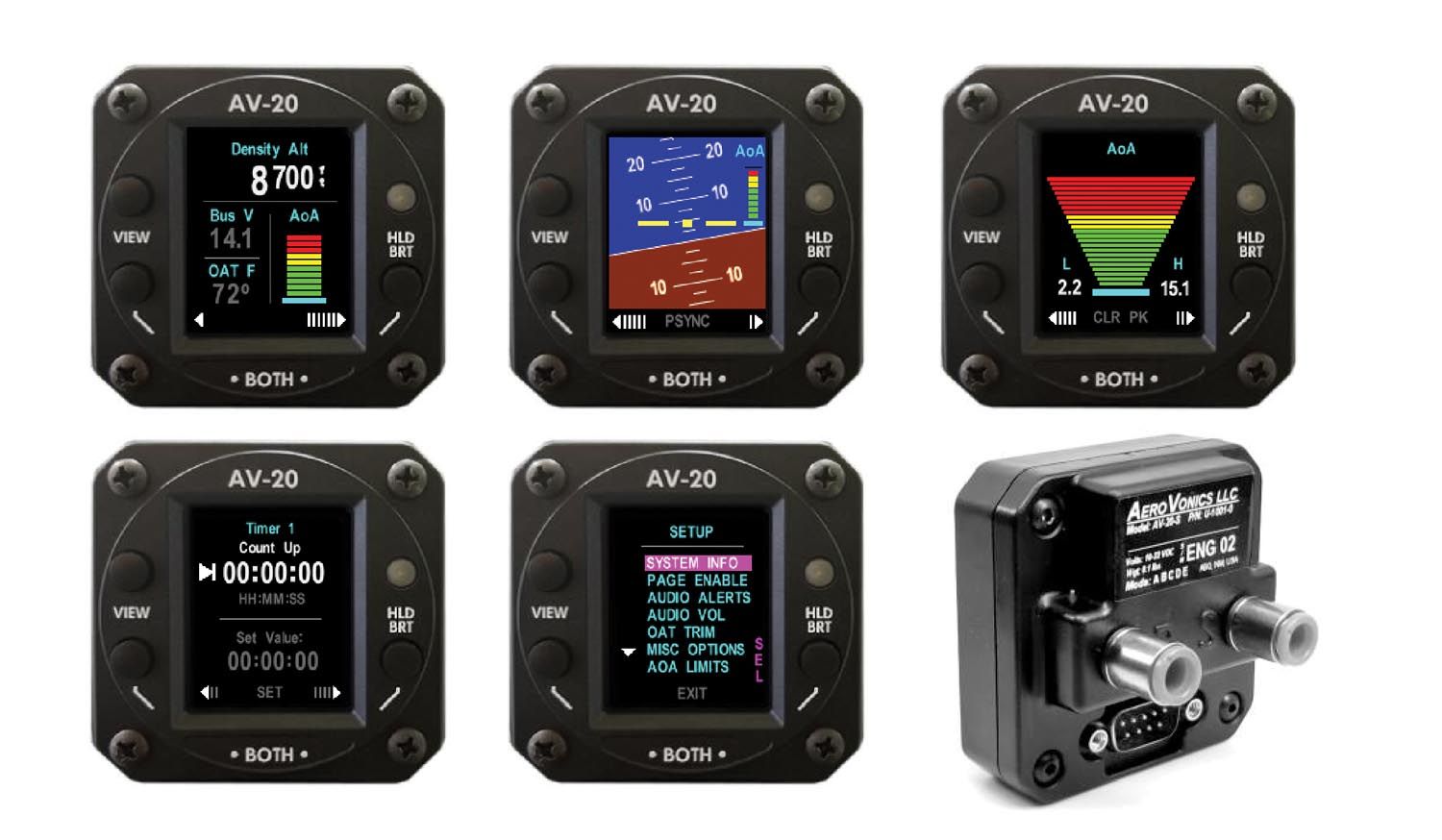
As for the installation as a whole, the company said it might be accomplished in around two hours. It’s pretty simple—the little AV-20-S has a pair of standard quick-connecting static fittings for tee’ing into the aircraft’s static system. There’s also a DB9 connector for power and ground, the audio alerting, and an OAT probe. Opt for the plain-vanilla AV-20 and it’s even easier.
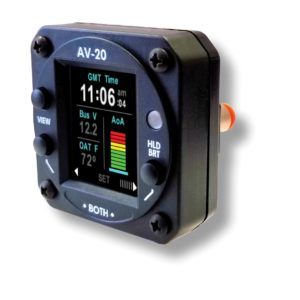
The AV-20-series also has a backup battery, although with less endurance than the AV-30, at roughly 30 minutes instead of two hours. But even with the smaller screen, you won’t have to sacrifice the probeless AoA function—it’s also standard on the AV-20-S—and lives on the right side of the AI as a tape-type display.
Keep an Eye on These Things
In our view, the AeroVonics AV-30/AV-20 products are ones worth watching. As we mentioned, the autopilot interface is a major functionality that could take some time to fully develop, but will transform the already clever AV-30 into a seriously capable instrument. The company said it (and the HSI display integration) will be available sometime in 2020.
At first blush, we like what we see in these first-gen AeroVonics products. With a simple installation, a bunch of safety functions as standard, audio output, and impressive onscreen graphics, we think the budget-priced AV-series can give the competition a serious run. Visit www.aerovonics.com for more information.













